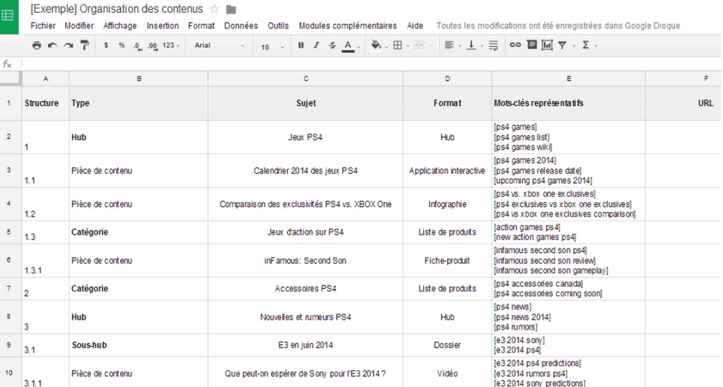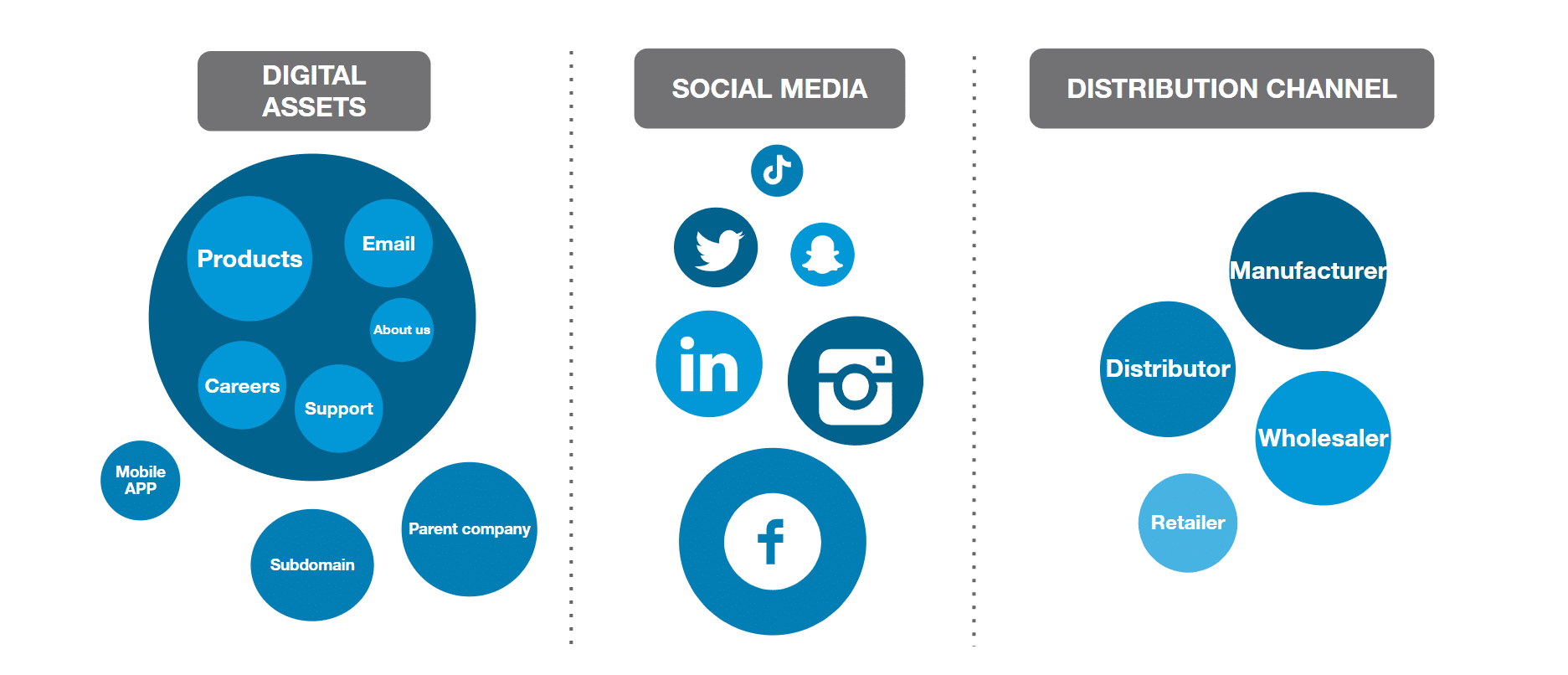Content Marketing Strategist
5 myths that prevent you from succeeding at SEO
Content Marketing Strategist
We’ve just finished an update of this article. Enjoy!
If ever there were a discipline that has never stopped evolving (and maturing) over the months and years, it’s SEO.
Tags, redirect rules, spamming without scruples… What, really, are the current best practices?
I asked around, and discovered that there are some SEO myths that marketers just don’t seem to be able to let go of. As a result, I decided to gather up all these common misconceptions and explain why they deserve to be torn down, refuted and buried.
Myth #1: All that matters, is targeting the right keyword
Succeeding in SEO is simple. Do a keyword search and target the term with the highest volume of monthly queries. #NOT
The foundation of a good SEO strategy is understanding the users behind the keyword – and their search intentions. Your mission: offer users the right content, at the right moment, on the right platform.
The user behind the keyword
Let’s come back to the definition of a keyword. A keyword is a word or a group of words typed or spoken by a user on a search engine. But then…
That user didn’t find themselves in front of their computer or phone without a reason – something motivated them. A need, a question, a worry or even a frustration drove them to spend time digging through search results. And if you want them to land on your site and give you a few minutes of their limited time, you need to understand them – and give them the answers they came for.
A keyword, then, contains more information that you’d think at first glance. The goal of keyword research is not to target a particular query, but rather to group together terms and phrases into logical, reasonable categories that correspond to specific user needs. This information can then be used to build your site’s information architecture and broadly define the content categories you’ll want to produce.

Organize your content according to user interests
Expose search intentions
I often collaborate with my clients to write out a first-person search intention for each category of keywords we identified during our research. A few fictitious examples:
- “I don’t want to use my phone anymore – it’s slow and I can’t even get the latest updates for my favourite apps. I’m a bit overwhelmed by the quantity of devices available. What’s the best phone of 2019?” (informational intention)
- “I’ve just been put in charge of a work team. I’m not sure I have the professional skills I need to carry out my role – I need specialized training.” (transactional intention)
- “I need glasses. I work near the Clinique du Plateau – what are users saying online?” (brand-related intention)
Keep in mind, too, that SEO isn’t limited to Google. Having a good understanding of search intentions can help improve your brand’s offering and relevance on other search platforms:
- Local platforms like Yelp, Yellow Pages or even Resto Montréal
- App Store, Play Store, Kindle Store
- Internal search engine (often neglected, but yet so useful!)
Myth #2: Any link is a good link
Succeeding in SEO is simple. Get a few hundred inbound links and you’re good to go. Especially if they’re placed on over-optimized anchor text! #NOT
A quality link needs to be earned. It should:
- Improve the user experience
- Generate direct (referral) and indirect (organic) traffic
- Stem from a mention that helps grow the visibility of your brand online
SEO ≠ Cost per click
In spite of the debate raging within the industry (which I will not wade into today), external links still play a major role on a site’s performance in search – this has been true since Larry Page and Sergey Brin published their thesis in 1998. Google’s goal is to serve users content that responds to their search intentions – and the quantity and quality of external links are quality indicators that signal the relevance of a website. An external link is considered a vote of confidence from one site to another: I like, share and endorse the content of another website.
Links are so effective that, for years, spammers used a plethora of tactics to generate artificial links. Here are a few examples:
- Contributing your brilliant comments to a blog post with a username along the lines of “cheap flower delivery montreal,” including a link to a dubious site
- Submitting a website to a directory claiming to be SEO friendly
- Publishing a “press release” with the sole goal of including two or three optimized links
- Buying a sponsored link on a blog
- Asking a webmaster to modify the anchor text of a link to your site to include a specific keyword
The logic behind these types of actions is clear:
- I identify a high-search volume keyword with the potential to generate revenue (the two conditions are not necessarily inseparable)
- I create a page on my site targeting that keyword
- I spend hundreds of dollars buying or renting links so that my page finds its way to the top of search results pages
Tsk, tsk – that’s very close to a cost-per-click mindset. The hiccup, is that it goes against Google’s quality guidelines: you can’t buy Google’s trust – and users’ love, even less.
In 2016, Google did an update to the most recent version of its Penguin algorithm with the intention of identifying and devaluing low-quality links. Now, certain types of links are actually harmful and incur penalties – beware if your link profile is made up mostly of spam or broken links.
There are no shortcuts to earn the types of quality signals that will hold value over time. Don’t risk your brand’s online reputation just to get a few low-quality links. Continue your link acquisition efforts – but do it smartly.
Think digital assets first, links second
I can guess your next question: how can I earn quality signals?
To answer, I’m going to turn the question back on you. Do you have assets that users might be inclined to link to – or at least share on social media?
Let’s start at the beginning – if your website is defective on a technical level (interminable load times, lots of 404 errors, duplicate content, etc.), the number and nature of your external links are irrelevant – links won’t make up for a low quality site. So first thing, make sure your website is in good shape.
Next, put together an inventory of your online and offline content. For example:
- Blog posts that still generate traffic months, even years after they were published (a web asset generates positive ramifications over the long term)
- Press releases
- PDF case studies
- PowerPoint presentations taken from one of your events
- Paper instruction guides that you never thought of publishing online (but that your customers can’t do without)
If possible, add performance metrics like organic traffic and social signals – these will serve to determine whether users have expressed and continue to express interest in your content.
If you’ve done your homework (if not, go back to myth #1), you have a good understanding of users’ search intentions and interests. Now, does your content meet their needs?
If not, it’s time to wake up: without assets, you’re cooked. You don’t necessarily need to create a new piece of content from A to Z, you can use pieces of things you already own (for example, a mash-up of your most popular blog posts on a certain subject).
The last step is to define the audience for each asset – who do you hope to reach? What platforms are they most likely to use? Who are their favourite public figures? You can then start to build your list of external contacts to reach out to – business partners, journalists, influencers, webmasters, etc.
Your goal is to develop, maintain and make the most of relationships with your digital ecosystem – it’s the concept behind Relationship-Based Link Building. When your lists are ready, outreach begins. The rest depends entirely on you!
Myth #3: The more content there is on my site, the better
Succeeding in SEO is simple. Create content solely for the sake of creating content. Publish as many pages as possible – content is king, and the king is insatiable. #NOT
Keep in mind that no one really reads content on the Internet – anything beyond two or three sentences per page and users get bored and go to BuzzFeed instead. We’re moving from “brand to user” marketing to “user to brand” marketing.
Your web content needs to add value
You’ve heard it before – content is king. Every year, it’s the biggest SEO prediction that emerges. You’ve heard it so often that you’ve started mass-creating content, any content – the content marketing train isn’t leaving without you!
It’s a sad state of affairs and I’ve seen it on many a website – where quantity wins out over quality. Where ideas for content come from who knows where. Where print content is reproduced word for word on the web.
A year before the Penguin update (so, 2011), Google updated its algorithm with Panda. Its role: clean up search results pages by eliminating webpages displaying low quality content (too short, auto-generated, duplicate, packed with keywords, etc.). In 2016, Google announced that Panda would be integrated into its main algorithm.
If you want your content to be considered by Google, it’s simple – your web content (text, images, etc.) must effectively meet one or more user needs. And you’re lucky – the Internet is teeming with data that you can use to find and support content ideas:
- Insights drawn from keyword research (very useful for building an initial content calendar)
- A survey on your own site
- Social listening and analysis of your online communities
- Analysis of the performance of your current content and the content published by your competitors (my current favourites: BuzzSumo and Ahrefs)
- Analysis of questions asked on dedicated spaces like Reddit, Quora and in forums
Rather than requiring your copywriters to come up with five blog posts per week, or to limit themselves to 500 words per page, ask that they spend at least two hours per piece of content trying to better understand the needs, questions, worries, etc. of your users. Choose quality over quantity. Web content is not an end in itself.
Think, too, about changing up the format of your content – articles, guides, infographics, videos, social media interaction, webinars, etc. You’re investing time and money to create quality content – get as much mileage out of it as you can by rolling it out in multiple forms.
In my case, this blog post stems from a Lunch & Learn I did internally. The opportunities are practically endless – choose the ones that you think will resonate most with the audience you’d like to connect with.
Evolve within your digital ecosystem

You are not alone on the web, think about that when you create and share content.
Your brand is in direct or indirect contact with business partners, influencers, etc. Include them in your content strategy:
- Invite an influencer to contribute an article to your website (bonus: they’ll almost certainly share the article in question with their audience – and voila! Referral traffic!)
- Quote an influencer’s tweet or add one of their blog posts as a reference within one of your content pieces (if you’re looking to break the ice and develop a relationship, this is a great way to do it)
- Offer original content to business partners or influencers who can reach a larger audience than yours – or a new audience with whom you’d like to gain credibility (and don’t even think about offering them content that you wouldn’t consider good enough for your own website – you should actually be offering them your best work)
Get to know their needs and questions, and integrate them into your digital ecosystem – the power to create, format and share high-value content is in your hands.
Myth #4: Write “for SEO”
Succeeding in SEO is simple. Force your copywriters to include a keyword every 25 words – keyword density, keyword density, keyword density. #NOT
Rather than concentrating on “SEO copywriting,” refocus your efforts on your users. They are the ones who visit your website, read and share your content, and generate revenue – not robots.
Optimize your readability level
Writing “for SEO” was an expression that seemed like common sense a few years ago, but that’s no longer the case today – even less so now that search engines are able to understand the semantic relationships between keywords and the concepts they relate to.
Since the Rankbrain update in 2015 (the biggest since Hummingbird in 2013), Google’s algorithm now uses machine learning to deliver search results to its users. It’s now beginning to understand and interpret abstract requests, even ones where the main keyword is absent.
Once you’ve spent time understanding who you’re talking to and defining what problem you’re solving or bringing a new perspective to, the keywords will appear naturally in your content. And better yet, by avoiding focusing in on one specific keyword (but rather on a concept), you actually improve the semantic field and overall quality of your content.
Remember that each piece of content you create is in competition with a multitude of others – the Google index contains at least 15 billion webpages. And what’s the variable that will play for or against any particular piece of content?
You, the reader.
Users rarely read online content from A to Z – they scan it. They come from multiple channels (organic traffic, direct traffic, social media, etc.) – and your article is competing with a friend’s Facebook post announcing the birth of their new baby. You also need to consider that readers’ attention online is often limited (especially on mobile devices). Your web content needs to be written with these realities in mind – without limiting yourself to writing a TITLE tag under 55 characters or putting keywords in bold so it will have more weight with search engines.
So, what to do? Take a deep breath, and use these five tips to optimize the readability level of your next piece of content:
- Don’t just settle on a title. Be creative and inspire interest – your title is the main factor that decides whether a user will give you a few minutes of their time.
- Write clear, specific subheadings. Do away with vague wording. If I got rid of all the copy in your content but kept the subheadings, I should still be able to understand the main ideas you’re trying to convey.
- Think about adding internal and external links. They enrich your text and help users discover new content. Avoid meaningless anchor text like, “Click here” – instead, choose “I highly recommend this fantastic resource on the subject.”
- Break up blocks of text by integrating bullet points or numbered lists (like I am doing now).
- No maximum length. I am a fervent defender of long content (and there’s data to back up my opinion) – if and only if the information is relevant and the article is well-structured. I’m demonstrating it today!
For the bigger geeks among you, there are a number of metrics you can use to evaluate the readability level of a piece of written web content – Flesch-Kincaid is one example.
Myth #5: The one and only KPI for SEO is my site’s ranking for [keyword]
Succeeding in SEO is simple. Every day, monitor how Google ranks your site for [keyword]. Don’t look at stats for traffic or other keywords, don’t worry about keyword (not provided) in Google Analytics, and it doesn’t matter how much it costs you – you absolutely need that coveted top spot. #NOT
A website’s ranking for a particular keyword is nothing more than a vanity metric – it’s an unstable measurement that isn’t representative of all the opportunities brands have. Make informed decisions by analyzing performance based on the type of content you’ve published, and the goals you’ve set for each piece.
My results page is different than yours
The era when the same search results were delivered to every Google user is past – particularly if you’re logged in to your Google account. Google collects your data (no one should be surprised by that) and uses it to personalize your search results – something, incidentally, that has created a lot of controversy!
Certain factors are taken into consideration whether you’re logged in or not – like the type of device you’re using (mobile, tablet or desktop) and localization. A user looking for a hair salon in Montreal won’t get the same results as a user in Toronto (even if the keyword doesn’t include the city name).
At the same time, what you see on Google is personalized based on your search history – if you visit a particular website often, you’ll see it come up more often in your search results.
The adaptation of search results to individual users is a growing trend – to the point that the data from my hotel reservation in Gmail can be used to help me find activities during my vacation. It’s not unrealistic to imagine that in the future, Google will serve me content about [hangover remedies] because I went out to a bar the night before.
You can still get a “neutral” view of search results by browsing “incognito” – but it’s less and less relevant to know how your site ranks for a particular keyword.
Should we completely ignore rankings, then? I don’t believe we should. I monitor the ranking of my clients’ websites for a number of keyword groupings that represent a particular search intention (for example: keywords related to a search for a specific product, brand-related keywords, etc.).
Like a doctor checking the overall health of a patient, it allows me to quickly identify significant variations, as these might be symptoms that something deeper is going on.
Measure performance based on your goals for each content category
It’s hard to make decisions on rankings, isn’t it?
If you want your brand to grow and approach content in a more mature, well-thought-out way, attribute goals to each content type and format you create and publish – both for informational content (to entertain and educate users) and for transactional content (to persuade and convert them).
Although more in-depth performance measurement models exist, here’s one you can easily implement and start familiarizing yourself with:
For informational content (blog posts, infographics, etc.):
- Organic traffic
- Referral traffic
- User retention and visit frequency
- Quantity and quality of social signals
- Quantity and quality of editorial links
- Engagement: likes, share and comments
For transactional content (product files, demonstrations, etc.):
- Direct and assisted conversions
- Quantity and quality of leads
- Number of participants
That said, a large part of your content efforts are intangible (and qualitative) – among other things, there’s the voice of your brand online, your relationships with users and influencers (can you really measure the interest or even the love of a user?), and the development of a loyal community around your brand.
What if we started talking about Search Experience Optimization instead?
I firmly believe that the traditional association of the term “SEO” with “Search Engine Optimization” no longer reflects what the discipline has become, and the slew of other fields of expertise it touches and enriches (public relations, branding, etc.).
It’s time for the concept of SEO to shake off the clichés that have become associated with it – and that prevent companies and professionals from becoming aware of the breadth of opportunities that are available.
There’s a reason the word “user” appears 40 times in this blog post, while “Google” was written 29 times – the human being behind their computer, smartphone or tablet should be the central concern of any professional who comes in contact with SEO, directly or indirectly.
Whether directly in a search engine or on another platform, the goal is to improve the search experience for users – the same users who will continue to have needs, questions, concerns and frustrations that will need to be addressed. It’s up to you to rise to the call.


.jpg)





